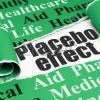CYBERMED LIFE - ORGANIC & NATURAL LIVING
CYBERMED LIFE - ORGANIC & NATURAL LIVING
 Placebo Effect - A placebo (/pləˈsiːboʊ/ plə-SEE-boh) is a substance or treatment of no intended therapeutic value. Common placebos include inert tablets (like sugar pills), inert injections (like saline), sham surgery, and other procedures.
Placebo Effect - A placebo (/pləˈsiːboʊ/ plə-SEE-boh) is a substance or treatment of no intended therapeutic value. Common placebos include inert tablets (like sugar pills), inert injections (like saline), sham surgery, and other procedures.
In drug testing and medical research, a placebo can be made to resemble an active medication or therapy so that it functions as a control; this is to prevent the recipient(s) and/or others from knowing (with their consent) whether a treatment is active or inactive, as expectations about efficacy can influence results. In a clinical trial any change in the placebo arm is known as the placebo response, and the difference between this and the result of no treatment is the placebo effect.
A placebo may be given to a person in a clinical context in order to deceive the recipient into thinking that it is an active treatment. The use of placebos as treatment in clinical medicine is ethically problematic as it introduces deception and dishonesty into the doctor–patient relationship. Placebos have no impact on disease itself; at most they affect peoples' assessment of their own condition.
Historically, an influential 1955 study entitled The Powerful Placebo established the idea that placebo effects were clinically important, and were a result of the brain's role in physical health, but a 1997 review of the study found "no evidence [...] of any placebo effect in any of the studies cited". Subsequent research has found that placebos are not a useful means of therapy.